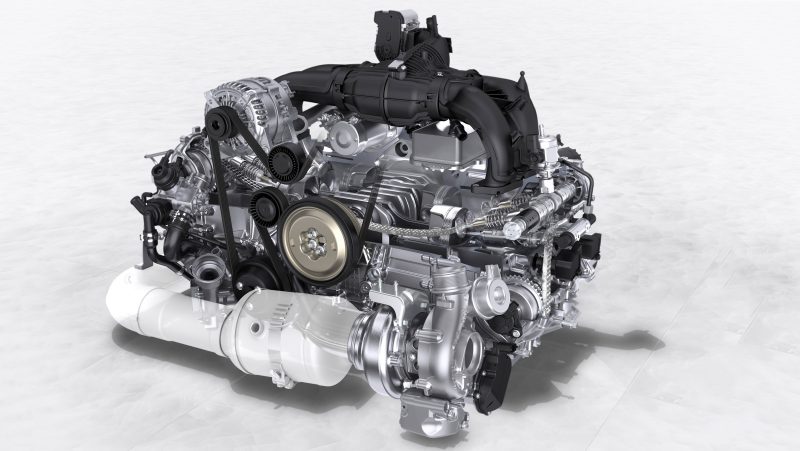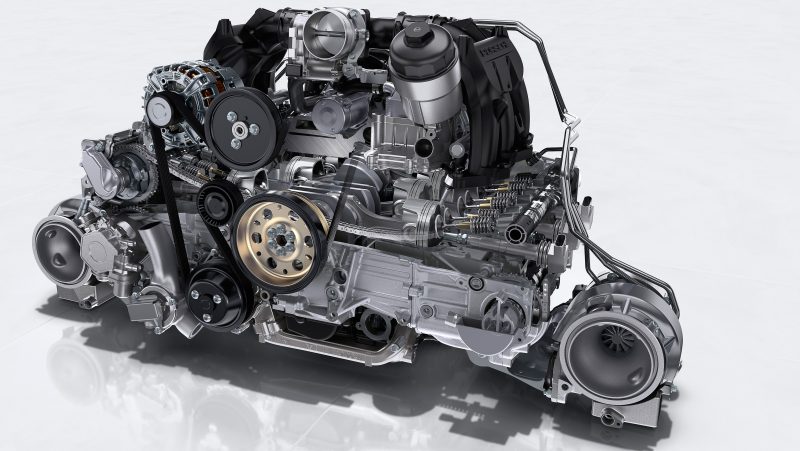
Thanks to its flat layout, the 718 Boxster S’ 2.5-liter four is incredibly compact, making it ideal for packaging concerns, weight distribution, and handling dynamics.
Along with that telltale silhouette of the heavy-haunched 911, the other item synonymous with the Porsche brand is the flat engine. The first example of this configuration was constructed by Carl Benz in 1896; built with the same basic layout as the current crop of Porsche’s flat engines.
Thanks to that odd configuration of cylinders, with opposing banks flanking the crankshaft, the flat engine offers an ideal center of gravity. Traction goes hand-in-hand with the flat-engine sitting squat over the rear axle, and that engine placement aids in braking as well; the load is evenly distributed over all four tires during heavy deceleration. Just another reason why the flat motor, when mounted over the rear axle, is a combination that will never get stale.
Though flat engines are complicated when compared to inline engines, they compensate with their lightweight construction, their smooth operation thanks to a balanced crank, and their high specific output due to advantageous charge cycles. They don’t use balance shafts, since the masses counteract each other due to the cylinder layout, which thereby trims heft. Plus, few engines have as seductive a sound as a flat-six when revved to the redline.
It’s funny to think that Carl Benz’s original flat motor only displaced 1.7 liters and made a paltry 5 horsepower. Fast forward 120 years, and that same configuration, as used in the 991 GT2 RS, can displace 3.8 liters and make 700 horsepower comfortably, all while retaining great weight distribution, streetability, and a relatively compact package. If that isn’t a testament to the worthiness of the flat layout, I’m not sure what is.

120 years after its inception, the flat engine provides all the handling and dynamic abilities any demanding enthusiast could want.
